There are lots of “doughboy parks” in New York City – parks with memorials to the young Americans who fought in World War I. Nine of them, according to the New York City Department of Parks & Recreation, including those at DeWitt Clinton Park and Abingdon Square. But only one is actually called Doughboy Park (the name Doughboy Plaza is also used), and if any place deserves the name, it’s this former WWI mustering ground in Woodside, Queens.

The monument itself features Burt W. Johnson’s sculpture of a soldier standing in a peaceful, almost devotional pose that’s unusual for this sort of statue. In my opinion it’s more affecting than the more active poses of other doughboy memorials.
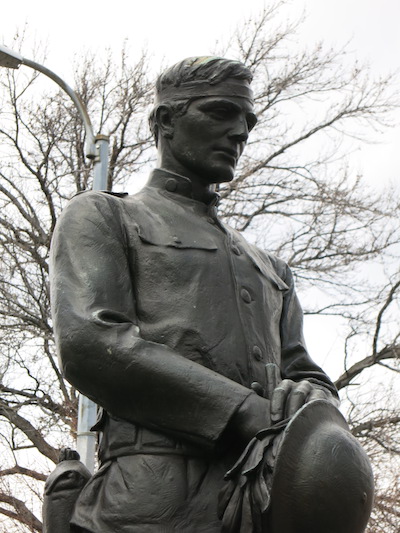
Dedicated in 1923, the memorial has since acquired a very specific character, with a list (added in 2006) of the soldiers from the neighborhood who died in the Great War. According to the Parks Department, the American Federation of Arts named the Woodside Doughboy (originally called the Returning Soldier) the century’s best war memorial of its kind, and community members still gather here every Memorial Day.
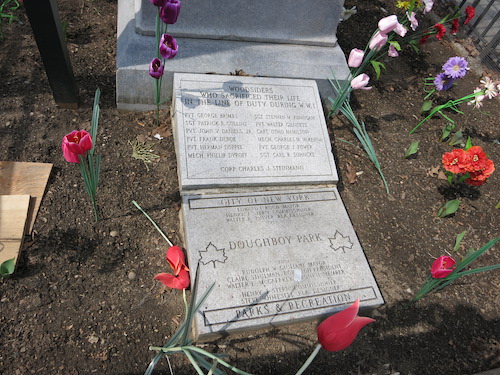
Doughboy Park is adjacent to P.S. 11 and was originally a play area for the school, but after being judged too steep it became a city park. 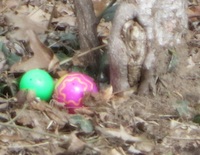
Aside from the somber doughboy himself, the park’s most striking feature is a large brick compass rose annotated with the names of the ancient Greek wind gods (the Anemoi), including my favorite, Zephyrus. Which Greek wind god is your favorite?
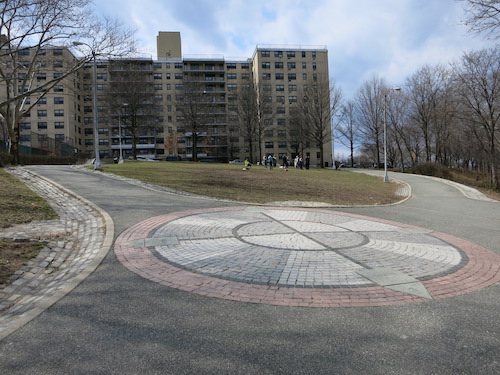
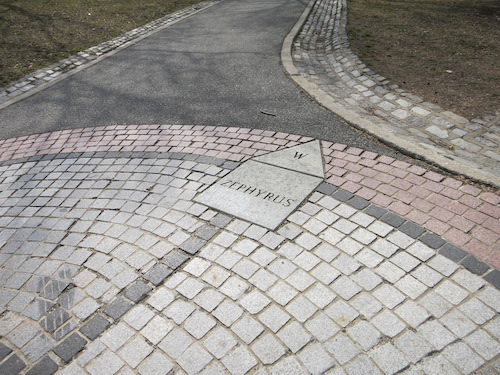
I love the design impulse behind features like that. It’s rare today. A Google Maps image shows that the points of the compass in fact do indicate north, south, east and west.
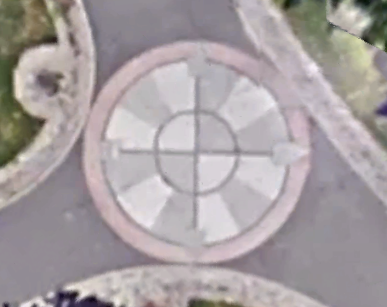
Getting a different kind of direction was a group of costumed young people rehearsing or videoing a performance of some kind.

One corner of the park hints at natural landscape and even wilderness. Cutting through this undeveloped area is a dirt trail that drew me inexorably along it as if I were hiking through the woods, even though it doesn’t really go anywhere at all.

Lovely photos and observations of my grandfather Burt W. Johnson's sculpture. I'm so glad you and others continue to value this sculpture. I'm currently researching and writing on Johnson's art.
ReplyDelete